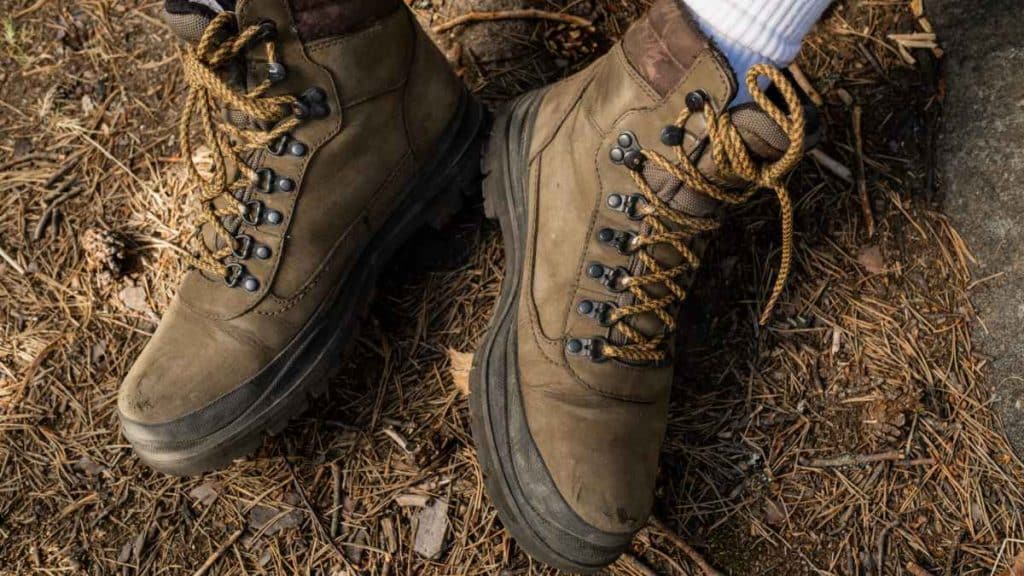Venturing into the great outdoors for a hiking adventure is as exhilarating as it gets. But, having the right gear can make the difference between an unforgettable experience and a painful ordeal. At the heart of this gear lie your hiking boots. In this blog post, we’ll walk you through the essential features you need to consider when looking to buy hiking boots.
A Stroll Through the History and Evolution of Hiking Boots
Hiking boots have come a long way from their humble beginnings. Initially, they were simply tough, often uncomfortable shoes designed to protect the feet from harsh terrain. Over time, the development of new materials and technologies led to considerable improvements in both comfort and functionality.
Today, the best hiking boots are a fusion of innovation and practicality. They’re designed to withstand various elements while providing optimal support and comfort. Modern boots offer a range of features tailored to different hiking conditions, making the hiking experience safer and more enjoyable.
Unraveling the Key Features of Hiking Boots
Understanding the fundamental features of hiking boots can guide you towards making the right purchase. Let’s dive deeper into each of these characteristics.
The Material Debate
The material of your boots plays a significant role in their durability and comfort. Leather, synthetic, and a mix of both are common choices, each offering unique advantages. While leather boots are known for their durability, synthetic materials often offer lighter weight and quicker drying times. Leather boots are typically more resistant to abrasion and provide excellent ankle support, making them ideal for rugged terrains. On the other hand, synthetic boots are often more affordable and require less maintenance. Moreover, they are often breathable and offer increased flexibility, ensuring comfortable long-distance hikes.
A Matter of Fit and Size
It can’t be overstated how vital the correct fit is when choosing hiking boots. A perfect fit ensures comfort during long hikes and minimizes the risk of blisters. To secure the correct size, consider trying on boots with the same type of socks you plan to wear hiking.
Ankle Support: A High Priority
Another crucial feature of hiking boots is ankle support. Boots with proper ankle support can prevent injuries, especially on uneven terrains. The level of support required can vary based on the difficulty of the hike and personal preference, so be sure to take these factors into account. When choosing hiking boots, consider the following:
- High-cut boots provide maximum ankle stability.
- Mid-cut boots offer a balance of ankle support and flexibility.
- Low-cut boots prioritize lightweight and agility.
Balancing the Weight of the Boot
When considering the weight of your hiking boots, it’s crucial to recognize the profound influence it can have on your overall hiking experience. The choice between heavier boots, which typically provide superior support and durability, and lighter boots, known for their enhanced comfort during long distances, presents a vital decision. However, it’s important to note that lighter boots may not offer the same level of protection as their heavier counterparts. Therefore, finding the perfect balance that aligns with your specific hiking requirements is of utmost importance.
Waterproofing: Your Shield Against Moisture
This is an essential feature to look for in hiking boots. Boots with good waterproofing can keep your feet dry in wet conditions, enhancing comfort and reducing the risk of blisters. Nonetheless, it’s essential to note that while waterproof boots excel in keeping moisture out, they may have reduced breathability.
It’s also important to consider the prevailing weather conditions in the areas you intend to hike. If you anticipate encountering hot and humid climates, opting for boots that offer a balance between waterproofing and breathability would be wise to maintain optimal foot comfort throughout your adventures.
Tread Pattern: The Grip Factor
Finally, the tread pattern on the sole of the boot is what keeps you grounded. Different tread patterns can offer various levels of grip, suitable for different terrains. A good tread pattern can provide stability on slippery or uneven surfaces, making your hike safer.
Making the Right Choice: Considering Personal Needs and Hiking Conditions
When you’re ready to buy hiking boots, it’s essential to consider your specific needs. Do you prefer long, challenging hikes, or are you more of a casual hiker? Do you usually hike in dry or wet conditions? Answering these questions can help you choose the best boots for your adventures. Below are additional factors to consider in choosing the right hiking boots.
- Terrain – Evaluate the type of terrain you typically hike on. Are you navigating rocky trails, muddy paths, or snowy slopes? Opt for boots with appropriate traction and support to tackle the specific terrain you encounter.
- Durability – Consider the durability of the hiking boots. If you’re an avid hiker who embarks on frequent, rugged expeditions, invest in high-quality boots made from durable materials that can withstand rigorous use.
- Comfort – This is paramount for an enjoyable hiking experience. Look for boots with ample cushioning, proper arch support, and a snug fit that allows your toes to wiggle without rubbing against the shoe. Consider trying on different brands and models to find the one that suits your foot shape best.
Selecting the right hiking boots involves considering your hiking preferences, the terrain you’ll encounter, the durability required, waterproofing features, comfort, and the weight of the boots. By carefully assessing these factors, you can make an informed decision that ensures optimal performance and comfort during your outdoor adventures.
Remember, the best boots are not just the most expensive or the most stylish ones. They are the boots that fit you perfectly, provide the right support, keep you comfortable in various weather conditions, and most importantly, make your hiking adventures memorable. So, when you’re ready to buy hiking boots, take your time to consider all these factors to make the best choice. Happy hiking!
Angela Spearman is a journalist at EzineMark who enjoys writing about the latest trending technology and business news.
